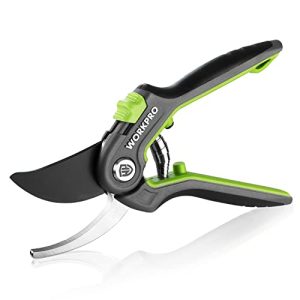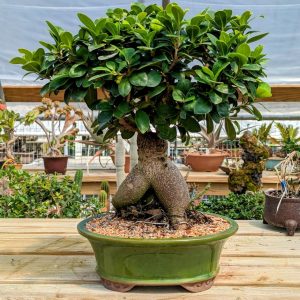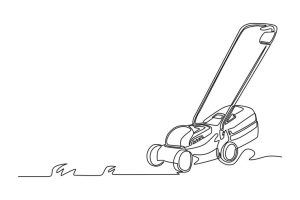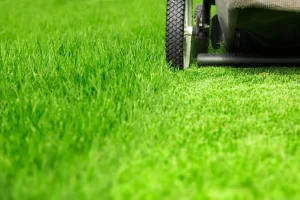Have you ever admired the delicate beauty of bonsai trees and wondered how their charming pots are crafted? Creating your own bonsai pot not only enhances the aesthetics of your plant but also connects you more deeply with the art of bonsai gardening.
Imagine having a unique pot that reflects your personality, adding a personal touch to your bonsai masterpiece. You’ll discover simple techniques to make bonsai pots that are both functional and visually striking. Whether you’re a seasoned gardener or just starting out, learning how to craft your own pots can be a rewarding experience.
Prepare to unlock your creativity and explore a new dimension in bonsai care. Dive in, and let’s transform your bonsai journey from ordinary to extraordinary!

Credit: www.youtube.com
Materials And Tools
Creating bonsai pots requires clay and a kiln for firing. Essential tools include carving knives and wire cutters. These items help shape and refine the pots, contributing to the beauty of the bonsai display.
Creating bonsai pots is an art that requires the right blend of materials and tools. If you’re new to this craft, the choices might seem overwhelming. But fear not—understanding the essentials will set you on the right path. Imagine crafting a pot that perfectly complements your bonsai tree, highlighting its beauty and charm. With the right materials and tools, you can achieve just that.Clay Types
Choosing the right clay is crucial for making durable and aesthetic bonsai pots. Stoneware clay is a popular choice due to its strength and ability to hold intricate details. It’s ideal for outdoor use, as it withstands harsh weather conditions. Earthenware clay, on the other hand, is easier to shape and comes in vibrant colors. However, it’s less durable and best suited for indoor pots. Porcelain clay provides a sleek, elegant finish but requires more skill due to its delicate nature.Essential Tools
You don’t need a lot of tools to start making bonsai pots, but some are indispensable. A potter’s wheel can help you create symmetrical pots with ease. If you prefer hand-building, rolling pins and wooden modeling tools will be your best friends. A kiln is crucial for firing your pots to make them sturdy and long-lasting. Sponges and brushes are useful for smoothing surfaces and applying glazes. Remember, each tool you choose should serve a specific purpose in your creation process.Optional Accessories
While not essential, certain accessories can enhance your pot-making experience. Texture mats and stamps can add unique patterns to your pots, giving them a personal touch. Carving tools allow for detailed designs, perfect for showcasing your artistic flair. Consider glazing tongs for safer handling during the glazing process. Turntables can provide easy access to all sides of your pot, making decorating a breeze. These accessories might not be necessary, but they certainly make the process more enjoyable. Have you ever thought about how the right tools can transform your crafting experience? Each choice, from clay to accessories, impacts the final outcome. As you experiment, you’ll discover which materials and tools resonate with your style. So, are you ready to dive into the world of bonsai pot making?Designing Your Pot
Creating bonsai pots is an art that combines creativity with function. Each pot plays a vital role in shaping the growth and aesthetic of the bonsai. A well-designed pot enhances the beauty of the bonsai, providing a harmonious balance between nature and craftsmanship.
Choosing A Style
Styles of bonsai pots vary widely. Consider the tree type and your personal taste. A traditional Japanese pot brings elegance. A modern design adds flair. The pot should complement the bonsai, not overpower it. Simple designs often work best. They allow the bonsai to stand out.
Size Considerations
Size matters in bonsai pot design. A pot too large distracts from the tree. A small pot might restrict growth. Choose a size that balances the tree’s height and width. Ensure the pot provides enough space for roots. This encourages healthy development. The right size supports both aesthetics and growth.
Drainage And Aeration
Proper drainage is crucial for bonsai pots. Excess water can damage roots. Pots should have drainage holes at the bottom. This prevents water accumulation. Aeration is equally important. It allows roots to breathe. A well-aerated pot contributes to vibrant tree health. Use materials that facilitate air flow. This keeps the bonsai thriving.
Preparing The Clay
Starting with quality clay is essential for crafting bonsai pots. Knead the clay to remove air bubbles. This ensures a smooth and workable texture, ready for shaping.
Preparing the clay is a key step in making bonsai pots. The right preparation ensures your clay is easy to work with. It also helps achieve the desired shape and strength. Proper clay preparation can enhance the beauty of your bonsai pots.Kneading Techniques
Kneading the clay removes air bubbles. It makes the clay smooth and uniform. Start by pressing the clay firmly. Fold it over, and press again. Repeat this several times. Use your body weight for even pressure. This technique is similar to kneading dough.Moisture Control
Controlling moisture is vital in clay preparation. The clay should be neither too wet nor too dry. If it’s too wet, let it air dry for a bit. If too dry, spray some water and knead again. Feel the clay with your fingers. It should be soft but firm.Clay Conditioning
Conditioning gives the clay the right texture. Once kneaded, let it rest. This helps the clay relax and settle. Cover it with a damp cloth. This prevents it from drying out. After resting, knead it again briefly. Your clay is now ready for shaping your bonsai pots.
Credit: www.reddit.com
Shaping The Pot
Crafting bonsai pots involves shaping clay into small, intricate designs. Start by kneading the clay to remove air bubbles. Mold it into your desired shape using simple tools.
Shaping the pot is an essential part of creating a bonsai masterpiece. The pot isn’t just a vessel; it’s an integral part of the art, complementing the tree and enhancing its beauty. As you dive into the world of bonsai pot making, you’ll discover different techniques that will allow your creativity to flourish. Whether you prefer the control of hand-building or the fluidity of a pottery wheel, shaping the pot is your chance to make your bonsai stand out.Hand-building Methods
Hand-building is a technique that offers a personal touch to your bonsai pot. This method allows you to mold the clay with your hands, giving you complete control over its shape and design. You can start with simple pinch pots, gradually moving to more complex shapes. Try rolling out slabs of clay and joining them together to form unique designs. Consider using tools like wooden sticks or metal scrapers to refine the edges and create smooth surfaces. This method is perfect if you enjoy tactile experiences and want to feel the clay transform under your fingers. If you’re curious about the freedom hand-building provides, why not give it a try?Using A Pottery Wheel
A pottery wheel offers a different approach to shaping bonsai pots. It allows for smooth and symmetrical designs, ideal for creating round or oval pots. Start by centering your clay on the wheel, a skill that takes practice but is rewarding once mastered. As the wheel spins, use your hands to shape the clay into the desired form. You can adjust the speed to suit your pace, making this method adaptable to your comfort level. Whether you’re a beginner or have some experience, the pottery wheel can be a fun challenge. Imagine the satisfaction of seeing your pot take shape as the wheel turns. Are you ready to spin your way to a perfect bonsai pot?Creating Textures And Patterns
Textures and patterns add character to your bonsai pot. Consider incorporating grooves, ridges, or imprints to make your pot visually interesting. You might use tools like stamps or brushes to create these effects. Adding textures not only enhances the pot’s appearance but also complements the bonsai’s natural aesthetic. Think about the patterns that resonate with you. Perhaps a leaf imprint or a wave-like texture that mirrors nature’s beauty? These details can transform a simple pot into a work of art. What unique textures will you create to make your bonsai pot truly one-of-a-kind? As you explore these shaping techniques, remember that each choice reflects your style. Engage with the process, and let your creativity guide you. The journey of shaping a bonsai pot is as rewarding as the final piece itself.Adding Finishing Touches
Creating bonsai pots is a unique blend of artistry and practicality. The journey doesn’t end once you’ve shaped your pot; adding those finishing touches is where your creativity truly shines. It’s the stage where your pot transforms from a mere container to a piece of art. Whether it’s smoothing out rough edges or adding decorative elements, these final steps are crucial. They not only enhance the aesthetic appeal but also ensure the pot’s functionality. So, how can you make your bonsai pot stand out?
Trimming And Smoothing
Once your pot is formed, it’s time to trim and smooth the edges. This step is essential for both safety and aesthetics. Sharp edges can be hazardous when handling the pot, especially when repotting your bonsai.
Use a fine-grit sandpaper or a file to gently smooth out any rough spots. This simple action can make a huge difference in the look and feel of your pot. Have you ever noticed how a perfectly smooth surface can change the perception of an object?
Don’t rush this step; take your time to ensure every edge is refined. This attention to detail sets your pot apart from others.
Attaching Feet Or Stands
Adding feet or stands to your bonsai pot can elevate its design—literally and figuratively. Feet provide stability and enhance drainage, which is crucial for your bonsai’s health.
Consider using clay or wood to craft simple feet that match your pot’s style. Even small changes, like attaching tiny feet, can create a dramatic effect.
Imagine your bonsai displayed on a pot with elegantly crafted feet. It becomes a centerpiece rather than just a plant. What kind of feet or stands can you envision for your pot?
Decorative Elements
This is where your personal style truly comes into play. Adding decorative elements can transform a plain pot into a work of art. Think about textures, colors, and patterns that resonate with you.
Do you prefer a natural look with earthy tones and subtle textures? Or perhaps a vibrant design with bold patterns? Small stones, carvings, or even painted designs can add character.
These elements can reflect your personality and make your bonsai pot uniquely yours. What decorative touches will make your pot unforgettable?
As you embrace these finishing touches, remember that each choice you make adds to the story your bonsai pot tells. Let your creativity flow, and watch your pot become a masterpiece.
Drying And Firing
Drying and firing are crucial in making bonsai pots. Pots must dry slowly to avoid cracks. Once dry, firing in a kiln hardens them, ensuring durability and beauty.
Drying and firing are crucial steps in making bonsai pots. These processes ensure the strength and beauty of your creations. Proper drying and firing enhance the pot’s durability and aesthetic appeal. Let’s explore these steps in detail.Drying Process
The drying process is essential for removing moisture from the clay. Begin by placing your bonsai pots in a well-ventilated area. Ensure they are out of direct sunlight. This prevents cracks and warping. The drying phase can take several days. Check the pots regularly for any uneven drying. Rotate them to ensure even moisture removal. Patience is key during this stage. Rushing can lead to damaged pots.Bisque Firing
Bisque firing is the first firing process. This step hardens the clay. Place the dried pots in a kiln. Set the temperature gradually. Aim for a range between 1000°C and 1100°C. This ensures the clay becomes durable and strong. Monitor the kiln’s temperature closely. Consistent heat distribution is important. This firing prepares the pots for glazing. It also removes any remaining moisture.Glazing Options
Glazing adds color and texture to your bonsai pots. Choose from a variety of glazes. Each offers unique finishes and hues. Apply the glaze evenly on the pot’s surface. Use a brush or dipping method. Ensure the glaze does not touch the pot’s base. This prevents sticking during the final firing. After glazing, fire the pots again. This final firing solidifies the glaze. The result is a beautiful, finished bonsai pot.Final Firing
The final firing stage is crucial in the process of making bonsai pots. This step ensures that your pots are not only functional but also durable and aesthetically pleasing. It involves firing the pots in a kiln to reach the desired hardness and finish.
Kiln Types
Choosing the right kiln is essential for successful final firing. You can opt for an electric kiln, which is user-friendly and offers precise temperature control. Gas kilns, though more traditional, provide a unique finish that many potters appreciate for its varied effects.
Personally, I started with an electric kiln because of its simplicity and consistency. It allowed me to focus on mastering the basics without worrying about fluctuations in temperature.
Temperature Settings
Proper temperature settings are key to achieving the perfect finish for your bonsai pots. Typically, stoneware clay requires temperatures between 1200°C and 1300°C. It’s important to know the specific requirements of your clay type.
Does your clay have any special needs? Some clays might require a slow ramp-up in temperature to prevent cracking. Always consult your clay’s firing guide.
Cooling Down
Cooling down is as vital as the heating process. Rapid cooling can cause your pots to crack. It’s advisable to let the kiln cool gradually by keeping the door closed for several hours after reaching the peak temperature.
Once, in my eagerness to see the results, I opened the kiln too soon. The pots, still too hot, were damaged by the sudden temperature change. Patience truly pays off in this step.
Have you ever rushed through the cooling process? If so, the lesson here is clear: give your pots the time they need to cool down properly for the best results.
Credit: www.reddit.com
Maintaining Your Bonsai Pot
Crafting your own bonsai pots adds a personal touch to your miniature trees. Start with clay or ceramic materials. Shape and size them to fit your bonsai’s needs. These handmade pots enhance your plant’s beauty, complementing its natural elegance.
Maintaining your bonsai pot ensures a healthy environment for your bonsai tree. Proper care keeps the pot looking beautiful and functioning well. Regular maintenance also prevents damage and extends the pot’s lifespan. Let’s explore essential tips for cleaning, repairing, and storing your bonsai pots.Cleaning Tips
Clean your bonsai pot regularly to prevent residue buildup. Use a soft brush to remove dirt from the surface. A gentle soap solution can help remove stains. Rinse thoroughly to avoid soap residue. Dry the pot completely before placing your bonsai back in it. Clean pots create a healthier environment for your plants.Repairing Cracks
Cracks can appear in bonsai pots over time. Address them quickly to prevent further damage. Use a clear epoxy to fill small cracks. Let the epoxy dry completely before using the pot. For larger cracks, consider consulting a professional. Proper repair ensures the structural integrity of your pot.Storing Pots
Store bonsai pots properly to maintain their condition. Keep them in a dry, safe location when not in use. Avoid stacking pots to prevent chipping or cracking. Wrap pots in soft cloths for added protection. Proper storage prolongs the life of your bonsai pots.Frequently Asked Questions
What Kind Of Clay Is Used For Bonsai Pots?
Bonsai pots typically use high-fired clay like stoneware or porcelain. These materials ensure durability and water retention. Terracotta is another common choice for its breathability, though it may be less durable than stoneware. Quality clay contributes to the health and aesthetic of the bonsai tree.
Should Bonsai Pots Be Deep Or Shallow?
Bonsai pots should be shallow. Shallow pots help control root growth and maintain the tree’s miniature size. Deep pots can cause excessive root growth, hindering the bonsai’s aesthetic appeal. Choose a pot that complements the tree’s size and style, ensuring proper drainage and stability.
What Materials Are Best For Bonsai Pots?
Clay and ceramic are ideal for bonsai pots due to their durability and ability to retain moisture. These materials also allow for proper aeration, which is essential for bonsai health. Ensure the pot has drainage holes to prevent waterlogging, which can harm bonsai roots.
How To Choose The Right Size Pot?
Select a pot proportionate to your bonsai’s size, promoting balanced growth. The pot should be slightly larger than the tree’s root spread. This allows for adequate root expansion and provides stability to the tree. Avoid oversized pots, as they can hinder the bonsai’s growth and aesthetic appeal.
Conclusion
Creating your own bonsai pots is truly rewarding. Simple steps, beautiful results. You gain control over the pot’s shape and size. Personal touch matters. Clay or ceramic? Both work well. Choose based on preference. Remember to consider drainage holes. Essential for plant health.
Experiment with glazes and textures. Creativity shines in customization. Each pot becomes a unique masterpiece. Your bonsai deserves a special home. Crafting pots enhances your gardening experience. Enjoy the art of pottery. Enjoy bonsai’s beauty in a handcrafted pot. The journey is part of the joy.
Have fun with your bonsai project!


